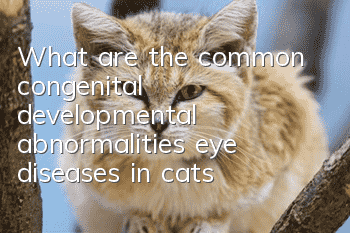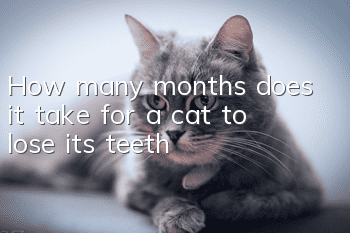What are the common congenital developmental abnormalities eye diseases in cats?

Gem-like eyes are the charming feature of most cats, but sometimes, this gem may encounter some unpredictable changes, such as congenital developmental abnormalities, which will not only make the cat’s eyes dim , may also lead to the occurrence of some diseases and affect the cat's life.
Most congenital eye diseases appear slowly as cats develop. According to the British "Mirror" report, two-year-old cat Matilda suffered from a congenital eye disease. He has a bulging black eyeball that resembles an alien creature. His peculiar appearance has made him famous on the Internet, with more than 30,000 followers on the social networking site Instagram.
It is reported that Matilda suffers from an eye disease called congenital lens dislocation, which causes her vision to be blurred and her eyes to bulge. Matilda's owner appealed for treatment on an Instagram account set up specifically for her, and learned that Matilda's brothers all suffered from the same disease.
Now after consulting with veterinarians and confirming that the disease is not painful, Matilda’s owner decided not to undergo surgery and let her remain healthy and happy. Her owner also said that Matilda is a perfect kitten and will always love and be by her side.
What are other congenital developmental abnormalities in cats?
1. Dermoid cyst
Congenital, tumor-like, island-shaped variant skin tissue involving the eyelids, conjunctiva or cornea; sometimes more than one tissue is affected; affected animals may have symptoms of blepharospasm and epiphora.
2. PPM
It is the remnant of the pupillary membrane from the ciliary area of the iris to the corneal endothelium, anterior lens capsule, or only connecting the edge of the pupil; may coexist with iris defects, cataracts, and uveal defects; can be seen in any breed of cat;
p>3. Iris cyst
A ring-shaped, pigmented or depigmented spherical structure free in the anterior chamber and adhered to the iris or corneal endothelium.
4. Congenital glaucoma and bull’s eye
Seen in cats; increased tearing and enlarged, red, and painful eyeballs may be seen.
5. Congenital pupillary abnormalities
Polycoria (more than one pupil); acoria (no pupil); missing iris; pupillary deformation (abnormal pupil shape).
6. Congenital cataract
Primary, often hereditary or secondary to other progressive defects; often accompanied by other congenital lens abnormalities, such as microphakia, cone lens, spherical lens (often posterior lens capsule bulging) and lens coloboma (Notch in the equatorial part of the lens, which may also be accompanied by defects in the ciliary body and ciliary zonules); often accompanied by leukocoria.
7. PHTVL and PHPV
Genetic defects; manifested as transparent parts of blood vessels; progressive distortion of the vitreous body, lens and lens capsule; cataracts and leukocoria may be seen, or bleeding in the lens causes the pupil area to reflect red light (rare), or the lens Neovascularization of the posterior capsule.
8. Photoreceptor dysplasia
It can be seen in rods, cones, or both at birth; the direct pupillary light reflex and the indirect pupillary light reflex are abnormal, or the affected animal is slow to react when opening its eyes.
9. Dysdevelopment of rod and cone cells in cats
Can be seen in Persian cats (details), Abisoyan cats and some American hybrids; dilated pupils can be seen in cats at 2-3 weeks of age, nystagmus can be seen at 4-5 weeks of age, 8 Retinal degeneration can be detected through ophthalmoscopy at the age of 1 week, and blindness can be found in affected cats a few weeks later.
- How to feed cats grass
- At what age can a Ragdoll cat's coat color be stable?
- How many times a week should you give cat food to your cat?
- Things to note when raising a chinchilla cat (how to raise a chinchilla cat well)
- Before buying canned cats, remember these three steps: look, touch, and listen
- Why is the cat vomiting white foam?
- Why do fold-eared cats shed so much?
- Tips for Kittens with Stuffy Nose
- What causes pet cats to vomit?
- Symptoms of motion sickness in cats



